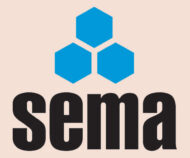Our first question this month asks about the purchasing of second-hand racking and the second enquiry is about the double stacking of pallets.
 Should we purchase second-hand Racking
Should we purchase second-hand Racking
Q. We have been offered some second-hand pallet racking for our warehouse, should we really be purchasing second-hand racking?
A. As noted below there can be some challenges in the use of second-hand racking and SEMA Technical Bulletin number 8 gives more information
In general, it is acceptable to use dismantled racking for ‘spares’ however, it is important that the members are undamaged and that they are genuine OEM parts. You need to make sure that the “spares” are compatible with the racking where you are using these parts. This is not always as straightforward as it appears as some racking can be made to imperial measurements and some to metric measurements; metric and imperial racking is not compatible. Some nuts, bolts and other fixings can be single-use so it would be wise to replace these making sure, of course, that you replace them with the correct grade, diameter and type of fixing.
Please also be aware that the racking should have a load notice and getting reliable information for the load notice can be a significant challenge with second-hand racking. Racking and shelving are considered to be work equipment and, therefore, are covered by the Provision and Use of Work Equipment Regulations (PUWER) which requires, amongst other things;
•That the equipment should be inspected and maintained in good working condition.
•That people operating work equipment are given adequate training in the correct use of the equipment,
•That employees are given necessary health and safety information.
The load notice does not just give information about the Safe Working Load (SWL) of the racking, there are also important instructions and information about the general usage of the racking e.g. prohibitions about altering or climbing the racking as well as an instruction to report damage and signposts to information sources.
Paragraph 634 of the HSE publication “Warehousing and storage – A guide to health and safety” HSG76 states that “Racking should have a clear unambiguous notice securely fixed to it, stating the maximum load together with any necessary specified load configurations”, and goes on to make reference to the SEMA publication on Load Notices.
If the racking/shelving does not have a load notice, then employers would need to find an alternative means of transmitting the information normally given on the load notice to their employees.
Double Stacking of Pallets
Q. Can we double stack pallets in a single pallet location?
A. We are not aware of any specific recommendations with respect to double stacking pallets in racking.
Double stacking pallets in a rack is (to some extent) similar to block stacking pallets and the following guidance is provided by the HSE in their publication HSG76 “Warehousing and storage – A guide to health and safety” an extract of which is below.
Stacking palletised loads (block stacking)
614 Avoid stacking palletised loads of cartons and packs that are capable of being crushed, as the strength and stability of the stack cannot be maintained. Loads that are capable of being stacked directly on top of each other should be positioned on a firm level base. It may be necessary to provide additional packing on top of the lower palletised load, depending on the characteristics of the load and design of the pallet.
615 Generally, such stacks should not be more than a 4:1 ratio between height of stack and the minimum depth/width of pallet. Four loads high might also be considered a maximum due to the potential problem of crushing the goods on the bottom pallet. In some circumstances, dependent on the height, strength and stability of the loads, taller stacks may be built. The maximum permissible height may be up to six loads high, provided that the pallet itself and the packaging of the stored goods are designed to exceed the four-high strength.
This guidance states that the practice should be avoided if the goods etc. are susceptible to crushing, i.e. the important criterion is that the goods/stack must be stable. The guidance goes on to say (in para 616) that stacks should be checked periodically and corrective action taken as necessary.
Clause 8.3.2 of BSEN15635 “Steel static storage systems – Application and maintenance of storage equipment” states “The goods shall be stacked or palletised such that they are stable”. This does not specifically prohibit double stacking pallets in the rack but it does require that the stack must be stable.
SEMA Rack Safety Awareness Inspection Courses
SEMA runs a one-day safety course on Rack Safety Awareness and Inspection. These courses are aimed at end users, giving an in-depth look at the need for inspections, how to conduct an assessment and what actions to take when this is completed. These courses are held at the SEMA headquarters in Burntwood, Staffordshire, but arrangements can be made to hold them at the delegates’ premises.
SEMA Approved Rack Inspectors Qualification
This qualification is aimed at professionals who conduct rack surveys as an integral and significant part of their duties. It involves delegates in undertaking an in-depth SEMA Course, together with an examination and practical assessment. CPD will be an important part of the qualification, demonstrating to end users that SEMA Approved Inspectors maintain a high professional standard.
SEMA Publications
SEMA has 26 publications in stock – Codes of Practice, ‘Guides’ and European documents – all of which are available to purchase online. For further information on these documents contact SEMA or visit: www.sema.org.uk.
SEMA




Comments are closed.